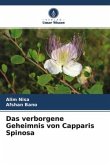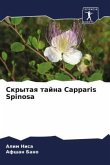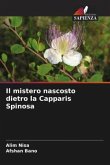Capparis Spinosa (C. Spinosa) contains a number of secondary metabolites that are important to mankind. There are approximately 250 species of Capparis, many of them found in the Mediterranean regions. Species are classified by quantitative and qualitative characteristics such as the shape of the leaves, flowers, and whether or not there are spines. C. Spinosa is not only used as a food, but also as medicine. Capparis shrubs have medicinal and aromatic properties in their fruit. The antimicrobial activity of C. Spinosa aqueous extract has been tested against some dermatophytes, this extract prevented completely the growth of two species of fungi: Misrosporum canis and Trichophyton violaceum. On the other hand, the petroleum ether and hexanic extracts of C. Spinosa aerial parts showed a similar activity of inhibition against both gram-positive and gram-negative bacterial species tested such as Helicobacter pylori, Escherichia coli and Bacillus cereus.
Bitte wählen Sie Ihr Anliegen aus.
Rechnungen
Retourenschein anfordern
Bestellstatus
Storno








